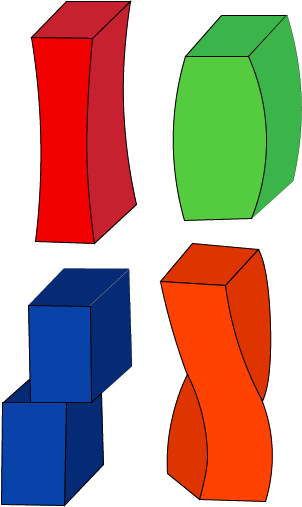Injection molding manufacturing produces many everyday parts, from pipet tips to car bumpers in a variety of polymer materials. Some parts are produced from neat, unfilled materials and some from materials that are filled with reinforcements and additives. Part designers should be able to evaluate the mechanical material behavior and properties of these different polymers to decide which is appropriate for various applications.
 Polymer behavior can be divided into two major categories, isotropic and anisotropic. Both words are derived from Greek. Iso, derived from the Greek isos indicates that the material properties are equal. Conversely, aniso, derived from anisos, indicates that they are unequal or uneven. Tropic, from tropos, means “way”.
Polymer behavior can be divided into two major categories, isotropic and anisotropic. Both words are derived from Greek. Iso, derived from the Greek isos indicates that the material properties are equal. Conversely, aniso, derived from anisos, indicates that they are unequal or uneven. Tropic, from tropos, means “way”.
Generally, isotropic behavior is found in unfilled materials and anisotropic is found in materials that have fiber reinforcement or contain additives with directional properties.
Stress is pressure inside the material or molded part due to an applied load. There are different forms of stress in molded parts, such as tension, compression, shear, torsion, or any combination of these. Strain is the response of the material to the stress or pressure load. It results in a physical deformation, such as an elongation or compression of the molded part. Flow-induced stress, molded-in residual, and thermal stress will influence part shrinkage and warpage behaviors.
Since molded-in stress, in conjunction with material properties, determine actual shrinkage and warpage behaviors, it is important to have a basic understanding of this topic.
Understanding the mechanical material behavior of polymer is essential part of successful part and mold design.
_____________________________________________________________________________________________________
Kruse Analysis, Inc. has been providing CAE simulation services to the plastic injection molding industry since 1995. By using advanced Moldex3D technology, Kruse helps customers troubleshoot from product design to development, optimize design patterns, shorten time-to-market, and maximize product return on investment (ROI). For more information, visit www.kruseanalysis.com
Kruse Training, Inc. offers a state-of-the-art online knowledge and training solution that use 3D process simulation technology to demonstrate cause and effect of molding behavior. This interactive training program illustrates how “The Circle of Knowledge” between the part designer, mold designer, and process engineers works in the real world of plastic mold and design. For more information, visit www.krusetraining.com/espanol

Preguntas, comentarios o retroalimentación...
Lo siento, debes estar conectado para publicar un comentario.